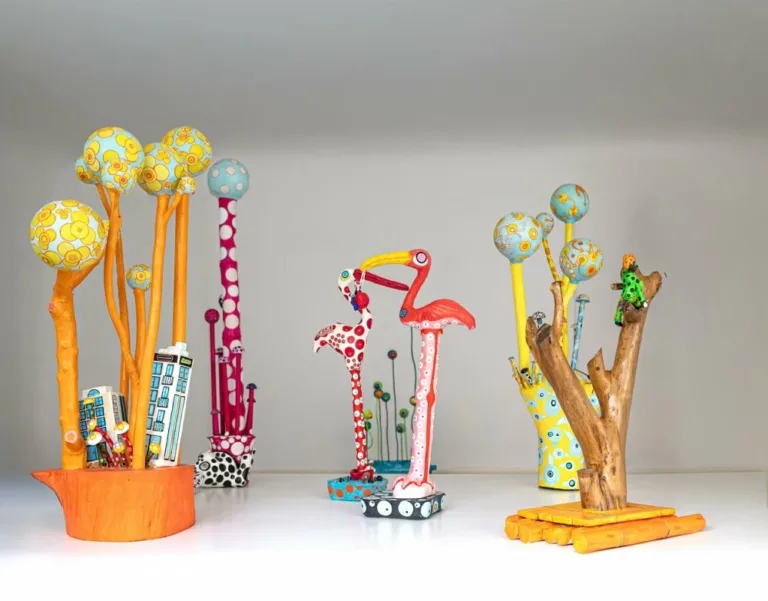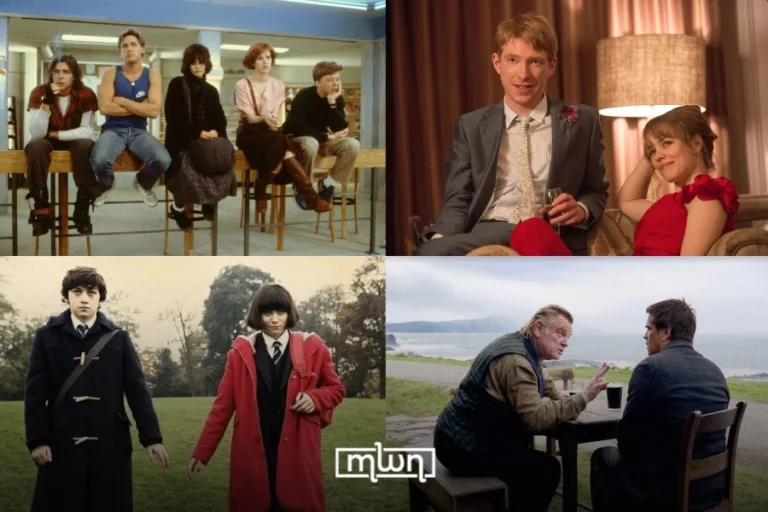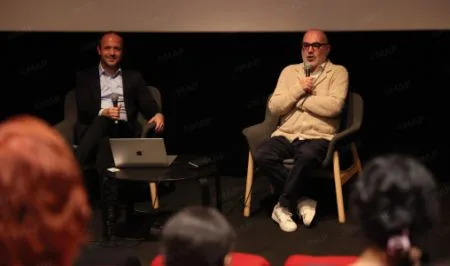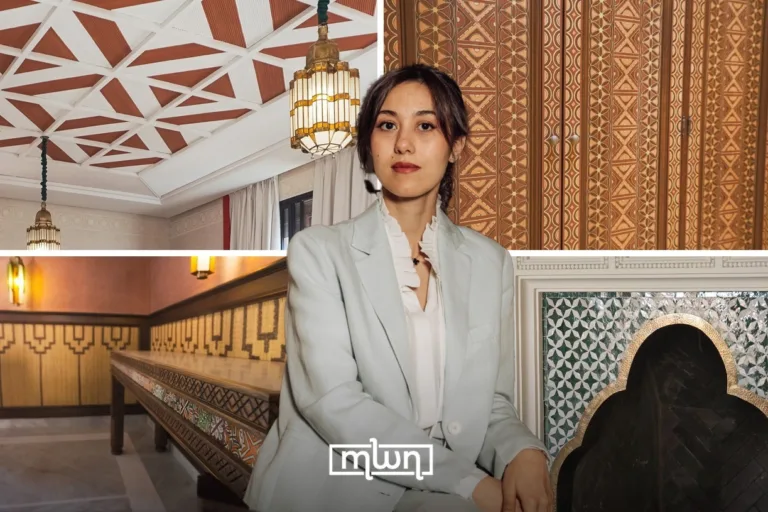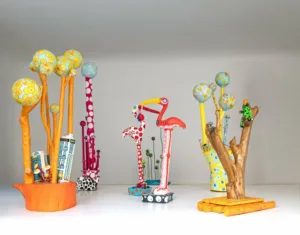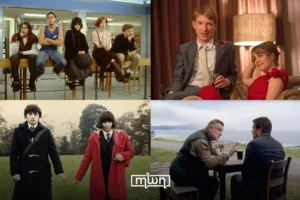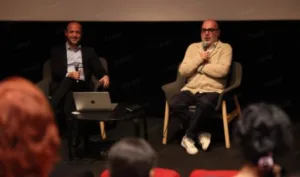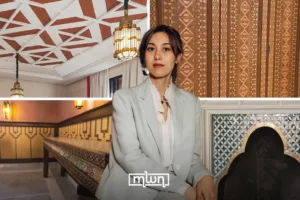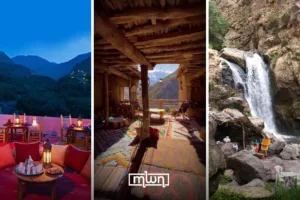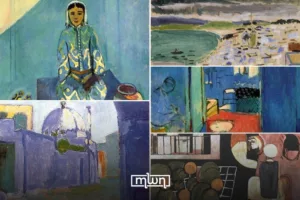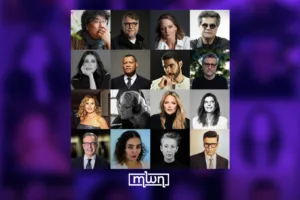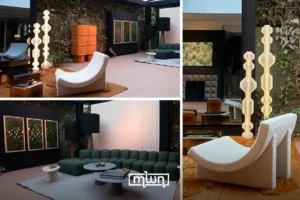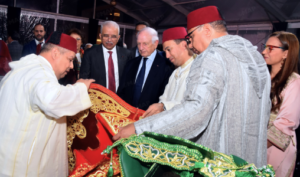Rabat — On the evening of April 15, American portrait painter Kehinde Wiley walked visitors through his latest project – “Mazes of Power” – at the Mohammed VI Museum of Modern and Contemporary Art. Building off of an investigation he began with famed portraits of former US President Barack and First Lady Michelle Obama, in this new collection of portraits Wiley interrogates the office of the president at large.
“I was thinking about the presidency at large as a symbol, as a seat of power that’s held by multiple people, and how these myriad experiences within that collide with each other,” Wiley explained in an interview with Morocco World News.
The presidential portraiture from which Wiley drew inspiration is a genre that has historically focused on the individual — a means of communicating the power and status of a singular subject, asserting dominance over the many by centering on one risen above the rest. This is a history that Wiley actively recalls and has embraced through his process.
Wiley compiled a book of political portraiture specifically for this project. Before each portrait Wiley and his sitter engaged in a collaborative consultation of the book, working together to pull inspiration from the clothing, poses, and backgrounds present in these images.
“It’s kind of this push and pull between my taste and their taste. The question then becomes who is the author?” Wiley explained to Morocco World News. “I guess the authorship is this kind of relay race, this push pull between them and me and history.
Process is central to this exhibition. Along with Wiley’s set of eleven, a video hidden at the dark center of the gallery displays Wiley’s face-to-face interactions in the preliminary stages of his creative process. Visitors watch as sitter and artist actively page through Wiley’s reference book — what he has referred to as his “Bible” throughout the process. The video presents an event in process, giving a viewer a new perspective and understanding of the exchange that grounded the static images they are interacting with in the gallery space.

Though each portrait centers an individual subject, upon entering the gallery, it is immediately clear that these works are in conversation with one another. Hung slightly above eye level, a retinue of domineering world leaders fills the gallery. Wiley’s bright, almost luminous colors, and almost hyper-realist figures emerge from black walls, confronting the visitor with their presence.
Beyond these figures, Wiley’s backgrounds hold particular significance. Several of his portraits maintain the arresting vegetal motif characteristic from his Obama portrait. This work hangs in the Smithsonian’s National Portrait Gallery, the former president leaning forward in a wooden chair, arms resting on his knees amidst a sea of ivy.
These new works carry a similarly intimate interaction between background and figure. In the Obama portrait the plants seem ready to swallow him up, the encroaching ivy spilling over the rails of his wooden chair and curling around his ankles.
Wiley’s backgrounds are central to his compositions. In his portraits of Olusegun Obasanjo, former President of Nigeria, and Faure Gnassingbe, President of Togo, vegetation is similarly employed. The two heads of state stand in and among flowers, falling in and peeking out of repeating floral motifs.

“The background is supposed to be submissive to the figure who’s standing in the front,” he said to Morocco World News. “But in a lot of these paintings, the background wants to demand space. It wants to push itself forward.”
Some of the figures find themselves in front of cityscapes, enormous gardens, or within historical interiors. These backgrounds have been modeled off of Wiley’s reference book. Many of the original interiors or landscapes were decidedly European, but Wiley has altered them to incorporate localized elements from the president in question’s home country. These choices act as a means to communicate what Wiley refers to as a “colonial echo.”
“A lot of the process that was being taken on in these paintings come from leaders in Western Europe and France in particular who want to represent a type of power mania,” he explained to Morocco World News. “For me, it was an interesting juxtaposition to create this kind of echo, an effect where the source image acts as a kind of visual vocabulary — how does it feel tried on by others, and how does the viewer decode or peel that onion?”
Though Wiley was born in Los Angeles, he feels tied to Africa through his father, who moved back to Africa before he was born. When Wiley was 19 he traveled to Nigeria to reconnect.
“From that year until now, I’ve been living and working and building a very interesting relationship with Africa, discovering my brothers and sisters, discovering cousins and uncles living and working in studios in both Nigeria and Senegal,” Wiley explained. “My relationship to Africa is one of an insider and an outsider, one of a foreigner and one who feels deeply a sense of belonging to the place.”

“Mazes of Power” was first exhibited in Paris. Its current display in Rabat follows its presentation in Dakar from May-June 2024. For Wiley, the continued life of this set of portraits after the Paris exhibition takes on particular importance.
“To see the work in Africa was also equally important to me,” he said. “I think that the way people view history, the way people view these black bodies in public space is often shot through with a set of rubrics that are determined by societies and cultures. The strength of Africa is in its unity. I think both socially and economically, we’re starting to see that a post-colonial reality, a 21st century reality of Africa lies in the hands of the Africans.”
In Rabat, the planned opening of the “Cité de la Culture Africaine: Museum of the Continent”, set for late 2025-2026, speaks to a similar project.
“I think that Morocco has taken on amazing leadership,” Wiley concluded at the showcase. “We’re starting to see with the advent of this new center for the arts, that it’s putting its money where its mouth is in terms of creating actual centers of excellence, where we don’t just think about African visual culture. We experience it.”


